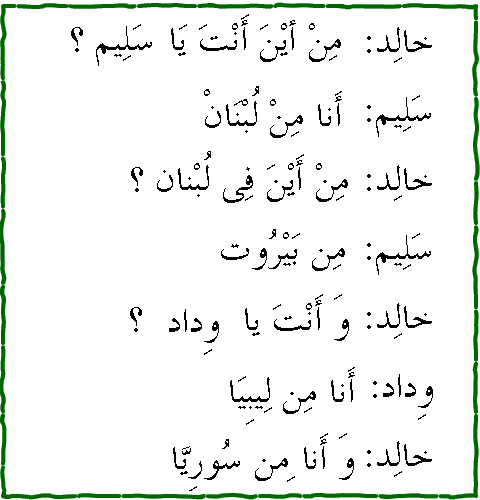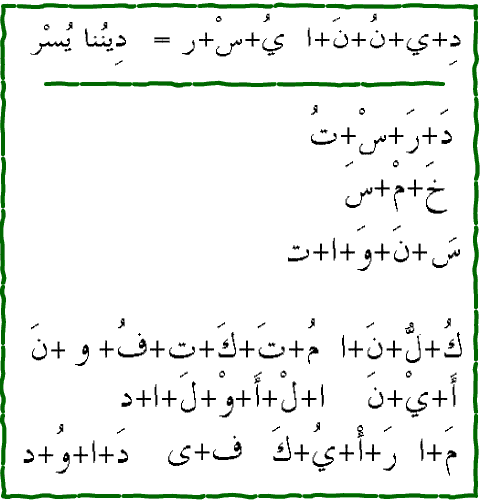| • Contents
• Links
|
|||||||||||||||||||||||||||||||||||||||||||||||||||||||||||||||||||||
 |
|||||||||||||||||||||||||||||||||||||||||||||||||||||||||||||||||||||
Note the slight change in the appearance with the long
vowel aa
One last thing in this chapter is the definite article: The definite article in Arabic is

|
|||||||||||||||||||||||||||||||||||||||||||||||||||||||||||||||||||||
























 (means: the door),it is prononced "Al" .
(means: the door),it is prononced "Al" . (means: the house).
(means: the house).


